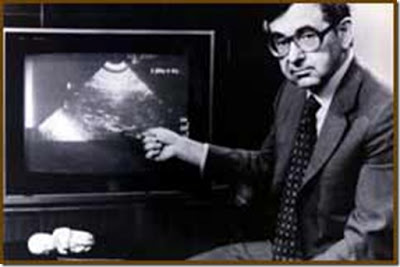THE TAKE AWAY
The History of Abortion and Feminism
By Kersley Fitzgerald

Part 1: The Feminist Movement and Abortion
In a previous post, I went over the history of feminism as explained by the organization Feminists for Life (FFL). The founding feminists were strongly pro-life, and remained so until around the time of Roe v. Wade in 1973. Then something happened…
The History of Abortion: Bait and Switch
Guilty? Yes, no matter what the motive, love of ease, or a desire to save from suffering the unborn innocent, the woman is awfully guilty who commits the deed. It will burden her conscience in life, it will burden her soul in death; but oh, thrice guilty is he who drove her to the desperation which impelled her to her crime! - The Revolution (Susan B. Anthony and Elizabeth Cady Stanton's newspaper)
So how did the switch happen? When did feminism become less about adapting the world to women's needs and more about adapting women to the broken culture? Serrin Foster explained it was the work of two men—the founders of the National Association of Repeal the Abortion Laws (NARAL).
The first was Larry Lader. He was concerned about overpopulation and that the human population would soon surpass the earth's ability to feed it. The second was Dr. Bernard Nathanson*. He had seen an abortion go horribly wrong and wanted to make the procedure legal for safety concerns.
The two started with the government, trying to convince legislators that anti-abortion laws were archaic. When that didn't work, they went to the women. They approached the National Organization for Women (NOW) and explained that if women wanted to get ahead in a man's world, they couldn't do it with kids. Pregnancy, maternity leave, and the demands of children take up too much time and energy that women could be dedicating to their careers.
Believe it or not, that still didn't work. So they lied. Lader told NOW that 10,000 women died every year from botched abortions. Nathanson later said Lader completely made up the number. But it worked. NOW changed its crusade from advancing the rights of women to advancing the right of women to have an abortion.
Women believed the lies. The lie that pregnancy is anathema to going to college. That no woman with children can also have a professional career. And the lie that fertility and child-rearing are 100% a woman's issue.
The History of Abortion and the Forgotten Victims
Women treated men like a check and diminished fatherhood. - Serrin Foster, President Feminists For Life
Men were also caught in the lie and let it marginalize the role of fathers. Stanton and Anthony lived in a culture where men had the first and last word on the rearing of children. Early feminists wanted the experience of parenthood to be one of partnership and equality. Modern feminists, led by NARAL, went to the opposite extreme, convincing men they had no rights in regards to their own children.
This affects men today in two opposite ways. For many, it leaves men without a choice. They are the childless fathers who had no right to see their children born. For others, it taught them a freedom from responsibility; that pregnancy was the woman's problem, and if they could not force the woman to get an abortion, they could at least walk away.
Foster points out that far from the angry bra-burners of the 70s, Feminists for Life love men—if they didn't, they wouldn't have to worry about pregnancy!
* Incidentally, after performing over 60,000 abortions, Nathanson (shown above) had the chance to witness an abortion via ultrasound. He quickly became an ardent activist against abortion, calling it "the most atrocious holocaust in the history of the United States." Having lived his life as a Jewish atheist, he converted to Catholicism because of the culture of forgiveness he found there.

Next: Part 3: Helping pregnant women choose
Image: Bernard Nathanson
comments powered by Disqus
Published 5-14-13

